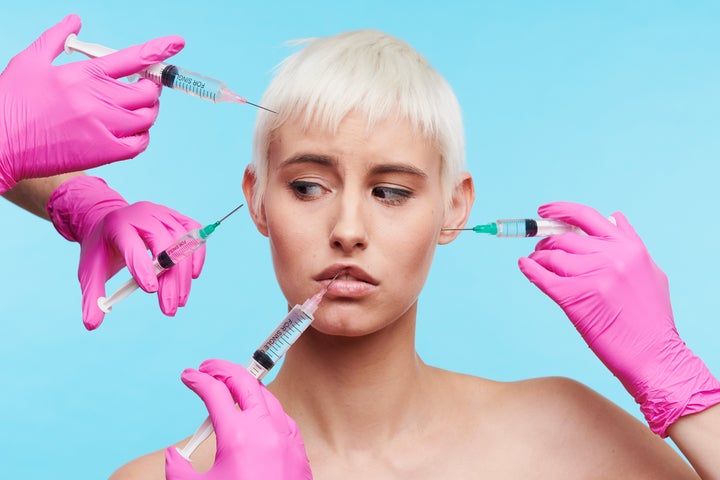
Nadine was 20 the first time she got lip fillers and “fell in love” with the plumped result. “It was important for me to maintain the look,” Nadine, now 27, tells HuffPost UK. The Londoner, who works in marketing for a big makeup brand, has had her lip injected every six months since. When she was 24, she added Botox to her beauty regimen to erase the “frown lines” she saw forming on her forehead. “I wanted the smooth, flawless look,” she says.
“Again, I fell in love with the results and maintain the look with getting a top up every three to six months.” Her routine may sound expensive – with the fillers costing upwards of £200 and Botox between £150-£300 each time – but Nadine is not alone in her use of non-surgical cosmetic treatments – or “tweakments”.
It’s hard to know just how many people are going under the needle in the UK, because non-surgical cosmetic treatments are not regulated. But surgeons anecdotally report an increase in clients seeking out this work. Consultant surgeon Niall Kirkpatrick, a member of the British Association of Plastic, Reconstructive and Aesthetic Surgeons (BAPRAS), says demand is increasing for lip fillers in particular, “especially in the young 18-24 year age group”.
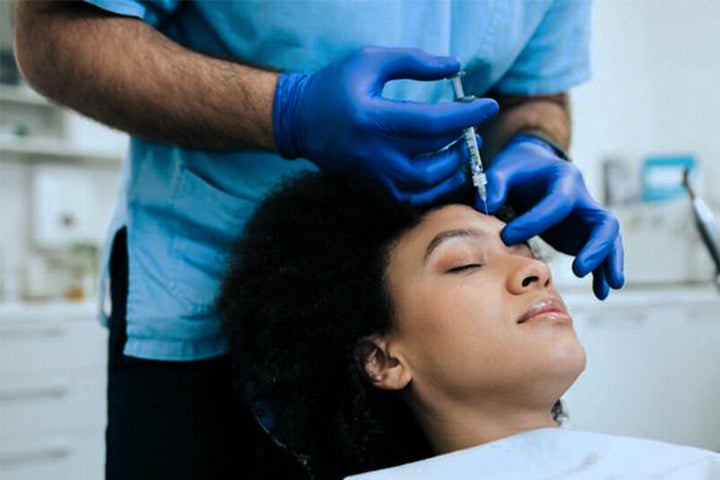
Statistics from the US, where non-surgical procedures are logged by the American Society of Plastic Surgeons, reflect this. The use of soft tissue fillers is increasing in the US year-on-year, with 2.68 million procedures completed in 2018, up 2% from the previous year, while the use of Botox (and other brands of anti-wrinkle injections) is up 3% since 2017 in the US – or 845% since 2000.
At the same time, ‘Traditional’ cosmetic surgery is enjoying a resurgence on TV. In the early noughties, we were all watching 10 Years Younger. Now it’s The Surjury on everyone’s lips – a new Channel 4 show for 2020, hosted by Caroline Flack, in which a jury will deliver their verdict on whether contestants should receive cosmetic surgery or not. The winner will receive free surgery, from “bum-lifts to nose jobs, sculpted abs to breast enlargements” – and the concept has already sparked controversy with actor and presenter Jameela Jamil saying it “will prey on people’s insecurities”.
Over on Caroline Flack’s other show, ITV2′s Love Island, it’s not uncommon for contestants to fork out for cosmetic procedures before they even walk into the villa to ensure they are pool – and HD – ready. “There is a fashionable desire in the young for a full lip look at present,” says Kirkpatrick. “This seems to be being driven by both the celebrity culture and especially social media.”
“It’s the celeb and influencer impact on social media that initially got me into it,” says Nadine of her own tweakment habit. “I think my interest in lip fillers started when Kylie Jenner started posting with her new plumped lips all over social media and Instagram. Obviously I had tried over-lining mine previously, but I knew that she’d had further work. I would never have considered it before.”
Working in the beauty industry and “constantly being surrounded with mirrors” also made her feel pressure to look a certain way, Nadine says. “My social crowd of friends still to this day would never get anything done.”
Nadine’s comments come as no surprise to Dr Tijion Esho, founder of The ESHO Clinic and resident cosmetic doctor on Channel 4′s Body Fixers. Celebrities have a “huge influence” in terms of which tweakments are most popular among the general public at any given time, he says. “Many of my long term patients known to the media, such as Michelle Keegan, Sam Friars or Billy Faiers, they all look great and many patients will bring in pictures of them wanting to emulate some of their features, from lips to flawless skin.”
Most dermal fillers used in the UK contain a natural substance called hyaluronic acid that is injected into the area being treated, which is then massaged. The treatment usually takes less than 30 minutes to complete. It’s this ease and the relative cheapness of the fillers that is driving demand, says Niall Kirkpatrick – combined with developments in the injections themselves.
“The fillers currently most used are lasting substantially longer than those injected a few years ago so that less injections are now required and overall, it becomes cheaper to do so,” Kirkpatrick explains.
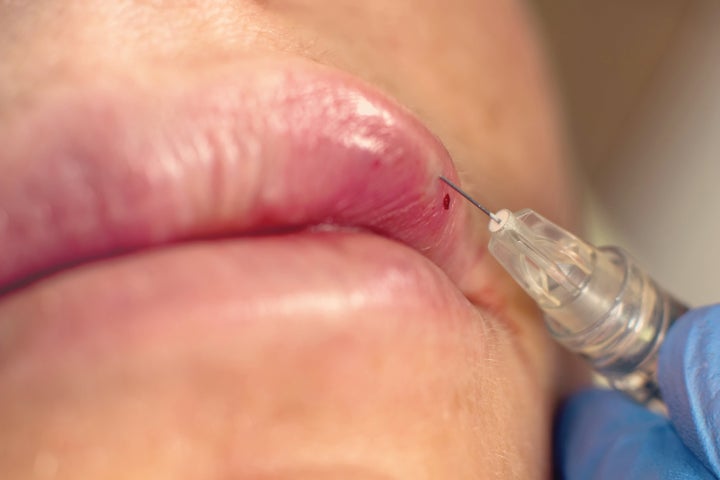
While non-surgical treatments are gaining favour, invasive cosmetic procedures are on the decline – at least off our TV screens. The number of women in the UK having breast augmentations in 2018, for example, was 7,727 – down 6% from the year before. But the shift towards non-surgical treatments isn’t necessarily good news, says psychotherapist Lucy Beresford.
“The very word ‘tweakment’ makes it sound not a big deal, and yet in many cases it is still a medical procedure,” she says. “A boob job or labia tightening feels significant, yet the drip-drip effect of constant tweakments is that you are less conscious of your choices and therefore how fixated you have become on trying to be perfect all the time.”
“Having a tighter jaw line or lip fillers doesn’t make you fundamentally a happier person.”
- Lucy Beresford, psychologist
Among her clients, Beresford says that any positive psychological effects of tweakments are often short-lived. “Having a tighter jaw line or lip fillers doesn’t make you fundamentally a happier person,” she says. She points to one report that suggests our modern ability to digitally “tweak” our appearance in selfies – through skin smoothing and teeth whitening apps – could be increasing instances of body dysmorphia among young people. This serious mental health condition causes someone to worry disproportionately about flaws in their appearance – even when or if these “flaws” are unnoticeable to others.
Dr Beth Bell, a senior lecturer in psychology at York St John University, says it’s “human nature” to want to look like others. But young women are met with “increasingly complex, airbrushed and cosmetically-enhanced facial beauty ideals” when browsing social media.
“Flawless skin, no wrinkles, big lips, bright eyes and defined cheekbones have been popularised by celebrities [such as] the Kardashians,” she says.
This could be increasing the number of young women unhappy about their appearance, she believes, in turn fuelling the rise of tweakment culture. “There’s increased facial scrutiny in society due to social media.” she says. “Over 1.4 billion images are shared on social media every day, and it’s estimated the average millennial will take over 27, 000 selfies in their life time.”
What are the long term body image implications for women having these treatments? “The research is lagging and we don’t really know,” says Dr Bell.
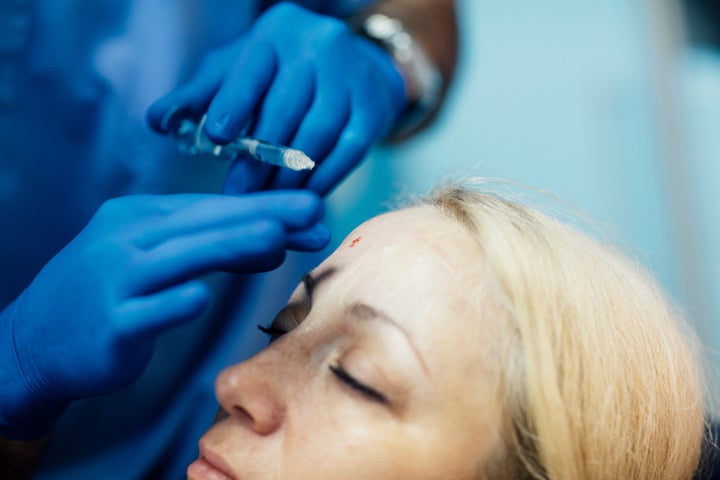
Some women who’ve had tweatments report only positive impacts on their wellbeing. Rebecca, 28, from London, had Botox for the first time nine months ago and says she feels more confident as a result.
“I frown naturally all the time, even in my sleep, so I’ve always been quite concerned with developing a very deep frown line – which is happening – so I took the plunge,” she says. ”I didn’t notice a huge difference regarding body image [after the treatment], but I fretted over it less when I looked in a mirror and liked the way I looked in photos much more.”
Rebecca’s family and boyfriend were quite scathing when she mentioned she was considering Botox, so she decided not to tell them when she did have it. The end result is subtle enough they haven’t yet noticed, she says. “I haven’t done it again yet because of money, but I’m planning to get it again in the next few months.”
Dr Esho believes the motivation for wanting any cosmetic procedure is key when considering whether it’s appropriate. While he has appeared on Body Fixers correcting botched surgeries, he turned down the chance to appear on Channel 4′s The Surjury because he believes cosmetic treatment should always be for yourself, rather than for others.
“I really do believe surgery is an exciting topic and should be discussed more openly, but I just felt that given surgery as a prize and letting others vote on the patient getting surgery clashed with what I personally believe in, and what the General Medical Council (GMC) outlines to us as doctors,” he says.
Those guidelines include the need for doctors who offer cosmetic interventions to give patients time to reflect so they can make an informed decision, as well as taking into account a patient’s vulnerabilities and psychological needs
“I would prioritise the expenditure over perhaps going for dinner.”
- Nadine, 27
To gauge whether your motivations have changed between tweakments, it’s vital to critically question why you’re having each top up done, says Dr Bell. Start by asking yourself what you are hoping to achieve by having the procedure – if the answer is anything beyond your appearance, it could be problematic, she says.
“Signs that you may be developing more serious body image concerns include obsessive or intrusive thoughts about appearance, negative thoughts about appearance that consume a large proportion of time, and constant comparisons to others’ appearance that make you feel bad,” she warns.
It’s also important to reflect on any financial implications, says Dr Bell, and if you are taking away from other aspects of your life by diverting your finances. While Rebecca is yet to have her first top up due to the cost, Nadine says the financial implications of treatment don’t worry her. “But I do make sure that there are enough funds available at the time of my top ups and I would prioritise the expenditure over perhaps going for dinner,” she says.
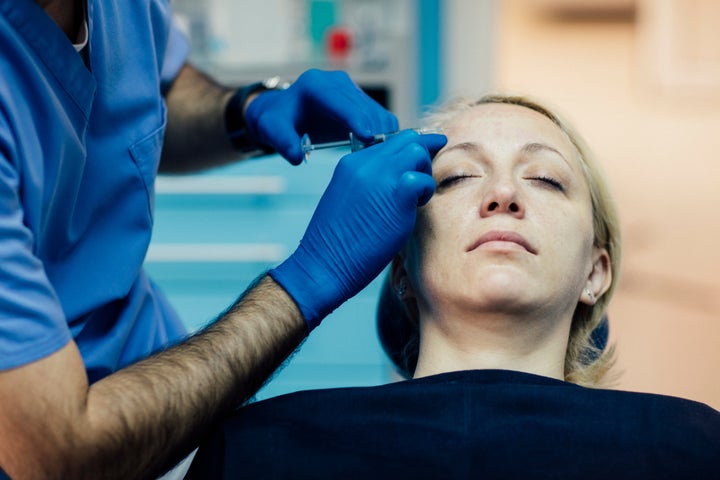
Opting for cheaper options when it comes to dermal fillers holds its own risk, warns Niall Kirkpatrick, who is concerned that they are currently regulated as medical devices, rather than drugs, in the UK. “They do not have to undergo the rigorous clinical safety trials that normal medicines have to undergo,” he says
There has been an “explosion of fillers” manufactured and marketed in recent years, he adds. “Currently there are more than 300 licensed for use in the UK and almost none have undergone clinical safety trials.” And the majority of people (80%) who have fillers get them injected by non-medically qualified people, according to BAPRAS research. “Non-qualified injectors have almost no knowledge of human anatomy, pharmacology or the medical risks and how to treat complications if they arise and do not have medical indemnity protection to cover the patient financially if something does go wrong,” Kirkpatrick says.
While only a minority of people suffer complications from fillers, consequences for those who do can be severe. “Infections can occur as with any injections,” Kirkpatrick explains. “Injections into the lip arteries can cause the lip tissues to die, and later on some people will produce reactions to the filler materials, producing hard painful lumps that can be very difficult to remove.”
A lot of people have the filler injected in such a way that the natural contours of the lips are lost making them look unnatural, he adds. “Even if the filler dissolves away later, sometimes the lips are permanently stretched in this unnatural look.”
Kirkpatrick and other BAPRAS members would like the government to regulate the cosmetic industry so that only appropriately qualified practitioners are allowed to inject. They also want fillers to be brought under the same controls as prescription medicines, so that they have to undergo rigorous clinical safety trials before they are allowed to be used on the public.
But for some young women, the results outweigh any risks. “They’re much more long term than a dinner or a night out. I consider it an investment,” says Nadine. “I genuinely feel better from having the tweaks done.”